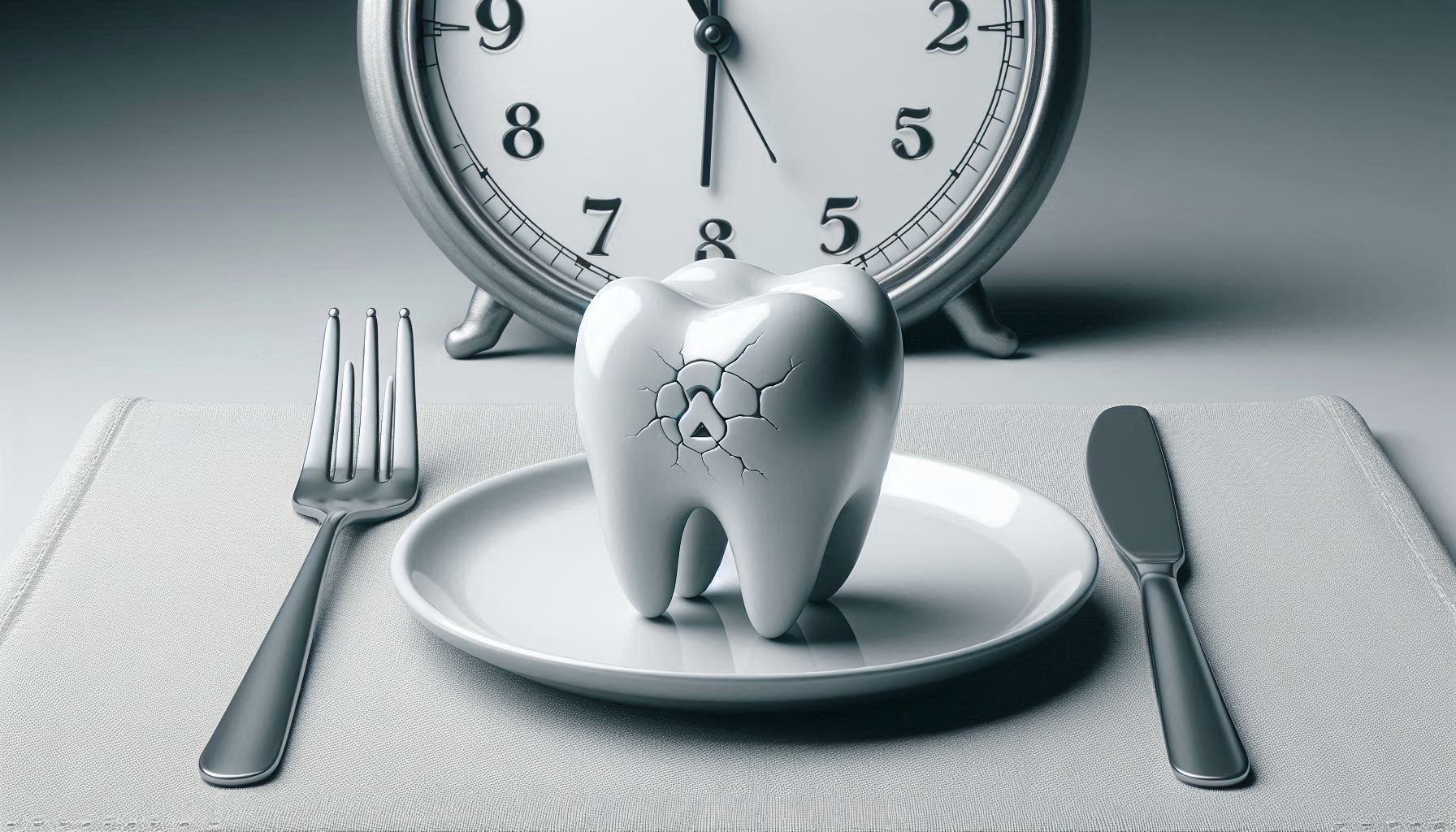Maintaining optimal dental health is a lifelong journey, and one effective tool in the prevention of cavities is dental sealants. This comprehensive article delves into what dental sealants are, how they work, their benefits, considerations for their use, and much more.
What Are Dental Sealants?
Definition and Composition
Dental sealants are thin, protective coatings typically made of plastic or resin-based materials. They are applied to the chewing surfaces of teeth, especially the molars, which have grooves and pits that can trap food particles and bacteria. The primary purpose of sealants is to act as a barrier, protecting the enamel from plaque, food debris, and harmful acids produced by bacteria.
Types of Dental Sealants
There are two main types of dental sealants:
- Unfilled Sealants: These are basic sealants that are applied to the tooth surface and set quickly. They provide effective protection against cavities but may not be as durable as filled sealants.
- Filled Sealants: These sealants contain small particles that enhance their strength and durability. They may be used in areas that experience more wear and tear, providing longer-lasting protection.
How Do Dental Sealants Work?
The Application Process
The application of dental sealants is a straightforward and quick procedure. Here’s a detailed step-by-step breakdown of the process:
- Initial Examination: Before applying sealants, the dentist conducts a thorough examination of the teeth. X-rays may be taken to assess the overall health of the teeth and identify any existing decay.
- Cleaning the Tooth: The tooth surface must be thoroughly cleaned to remove any debris, plaque, or food particles. This step is crucial for ensuring that the sealant adheres properly.
- Preparation: The dentist may apply an acidic solution to the tooth’s surface, which helps roughen it up slightly. This roughening increases the bonding surface area, allowing the sealant to adhere better.
- Application: The sealant is then painted onto the grooves and pits of the tooth. The dentist ensures that it flows into all the contours of the tooth, effectively covering the vulnerable areas.
- Curing: After application, the sealant hardens quickly, often within a few minutes. Some sealants may be cured using a special blue light, which speeds up the hardening process and ensures a strong bond.
- Final Check: Once the sealant is applied, the dentist checks to ensure that it has set properly and that the bite feels comfortable. Any excess material is removed, and adjustments are made if necessary.
Duration of Protection
Dental sealants can last several years, but their longevity depends on various factors, including oral hygiene practices, dietary habits, and the location of the sealant. Regular dental check-ups are essential to monitor the condition of the sealants and reapply them if necessary.
Who Should Get Dental Sealants?
Age Considerations
Dental sealants are most commonly recommended for children and teenagers, as they are at a higher risk for cavities during their formative years. The American Dental Association (ADA) suggests that sealants be applied as soon as the first permanent molars emerge, usually around age six, and again when the second set of molars comes in around age twelve.
Adult Considerations
While sealants are primarily geared towards younger populations, adults can also benefit from them. Adults with deep grooves in their teeth or those who are at higher risk for decay due to various factors—such as a history of cavities, poor oral hygiene, or certain medical conditions—may be candidates for dental sealants.
Risk Factors for Cavities
Understanding who is at risk for cavities can help identify potential candidates for sealants:
- Diet: A diet high in sugars and carbohydrates increases the risk of tooth decay. Bacteria in the mouth feed on sugars, producing acids that can erode enamel.
- Oral Hygiene: Inadequate brushing and flossing can lead to plaque buildup, increasing the likelihood of cavities.
- Dry Mouth: Conditions that reduce saliva production can heighten the risk of decay since saliva helps neutralize acids and wash away food particles.
- History of Cavities: Individuals who have had cavities in the past are more likely to experience them in the future.
Benefits of Dental Sealants
- Cavity Prevention: One of the primary benefits of dental sealants is their ability to significantly reduce the risk of cavities. Studies have shown that sealants can decrease the incidence of cavities in molars by up to 80% during the first two years after application.
- Cost-Effectiveness: Preventing cavities with sealants can be a cost-effective approach to dental health. The cost of sealants is generally much lower than that of fillings, crowns, or other restorative treatments. By investing in sealants, individuals can save money in the long run.
- Quick Application Process: The application process for dental sealants is quick and painless. It usually takes only a few minutes per tooth, making it an efficient preventive measure. Most children tolerate the procedure well, as it doesn’t involve any needles or drilling.
- Long-Lasting Protection: When properly applied and maintained, dental sealants can last for several years, providing ongoing protection against decay. Regular dental visits will help ensure that the sealants remain intact and effective.
- Easy Maintenance: Sealants require no special care beyond regular oral hygiene practices. Patients should continue to brush and floss daily and visit their dentist for routine cleanings. This ease of maintenance makes sealants an attractive option for busy families.
- Enhanced Confidence: By reducing the risk of cavities and promoting better dental health, sealants can contribute to improved overall well-being and confidence, especially in children. Healthy teeth are less likely to cause discomfort or lead to more serious dental issues, allowing individuals to focus on enjoying life.
Considerations and Limitations
While dental sealants offer numerous benefits, there are some considerations to keep in mind:
- Not a Substitute for Brushing: Dental sealants are an excellent preventive measure, but they do not replace the need for regular oral hygiene practices, including brushing, flossing, and professional dental cleanings. Maintaining good oral hygiene is crucial for long-term dental health.
- Wear Over Time: Although sealants can last several years, they may wear down or chip due to factors such as grinding teeth, improper care, or heavy biting forces. Regular dental check-ups are important to monitor the condition of the sealants and determine if reapplication is necessary.
- Not Suitable for All Teeth: Sealants are most effective on the back teeth with pits and grooves. They are generally not applied to smooth surfaces or teeth that already have decay or large fillings. A dentist can assess the suitability of sealants for each individual tooth.
- Possible Allergic Reactions: Some individuals may have sensitivities to the materials used in sealants, although this is rare. Patients should discuss any known allergies with their dentist before the application.
The Role of Dental Professionals
Importance of Dental Check-ups
Regular dental check-ups are essential for maintaining oral health and determining the need for dental sealants. During these visits, dentists can assess the condition of existing sealants, evaluate overall dental health, and recommend preventive measures.
Educating Patients
Dentists play a critical role in educating patients about the benefits of dental sealants and the importance of preventive care. Providing information about proper oral hygiene practices, diet, and the role of sealants in cavity prevention can empower patients to make informed decisions about their dental health.
Tailored Recommendations
Each patient’s dental health is unique, and dental professionals can offer tailored recommendations based on individual risk factors and needs. Factors such as age, diet, oral hygiene habits, and dental history all influence the decision to apply sealants.
The Science Behind Dental Sealants
Research and Studies
Numerous studies have demonstrated the effectiveness of dental sealants in reducing cavities among children and adolescents. Research indicates that sealants can prevent up to 60% of cavities in molars, highlighting their role as an important preventive measure.
Mechanism of Action
The mechanism by which dental sealants work is straightforward. The sealant material fills in the grooves and pits of the tooth, creating a smooth surface that is more resistant to plaque accumulation and acid attack. This barrier effectively shields the enamel from harmful substances, helping to prevent decay.
Long-Term Studies
Long-term studies have shown that sealants not only reduce the incidence of cavities but also contribute to better overall oral health. Children who receive sealants tend to have lower rates of dental caries, leading to fewer dental visits and treatments in the future.
Sealants and Public Health
The Impact on Community Health
Dental sealants are not only beneficial for individual patients; they also have a positive impact on community health. By reducing the incidence of cavities, sealants can lower the overall burden of dental disease in communities, contributing to improved public health outcomes.
Access to Care
Access to dental sealants can be particularly important for children from low-income families, who may face barriers to dental care. Programs that provide sealants in schools or community health centers can help ensure that all children have access to this preventive measure.
Advocacy and Education
Public health initiatives aimed at increasing awareness of the benefits of dental sealants are crucial. Advocacy efforts that promote preventive care and education can help reduce the prevalence of dental decay in communities, leading to healthier populations.
Conclusion
Dental sealants are a valuable tool in the prevention of tooth decay, particularly for children and adolescents. By providing a protective barrier against cavities, they help promote long-term dental health and can significantly reduce the likelihood of needing restorative treatments in the future. These thin, protective coatings create a barrier on the chewing surfaces of molars, effectively shielding them from plaque and harmful acids. The application process is quick and painless, requiring only a few minutes per tooth, making it an ideal option for busy families.
Sealants not only reduce the risk of cavities but also offer long-term cost savings by minimizing the need for more extensive restorative treatments down the line. Regular dental check-ups are vital for monitoring the condition of sealants and ensuring their continued effectiveness. While sealants are primarily recommended for children, adults with specific dental needs, such as deep grooves in their teeth or a history of cavities, can also benefit from them. By discussing the option of dental sealants with your dentist, you can take a proactive step toward safeguarding your oral health. Coupled with good oral hygiene practices, including regular brushing and flossing, sealants can significantly enhance overall dental well-being. Public health initiatives that promote awareness of dental sealants can also play a crucial role in reducing dental decay in communities, ensuring that everyone has access to preventive care. Ultimately, prioritizing preventive measures like sealants can lead to healthier smiles and a brighter future for individuals and families alike.
SOURCES
American Dental Association. (n.d.) – Dental sealants: A preventive measure against cavities.
Folio, L. (2021) – The effectiveness of dental sealants in cavity prevention: A systematic review. Journal of Dental Research, 100(3), 200-206.
McGowan, R., & McCarthy, J. (2022) – Long-term benefits of dental sealants in children and adolescents. Pediatric Dentistry, 44(2), 121-128.
National Institute of Dental and Craniofacial Research. (2020) – Oral health in America: A report of the Surgeon General.
Rodd, H. D., & Marshman, Z. (2019) – The role of dental sealants in public health. Community Dentistry and Oral Epidemiology, 47(5), 357-364.
West, C. H., & Baker, D. (2023) – Preventive dental care: The importance of sealants. American Journal of Dentistry, 36(1), 15-20.
HISTORY
Current Version
October 18, 2024
Written By:
SUMMIYAH MAHMOOD




